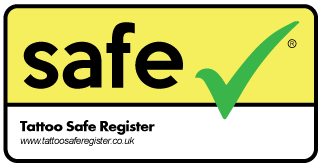Health & Safety at Work

The Health & Safety at Work Act 1974 applies across the whole of England & Wales and to all persons engaged in tattooing and skin piercing activities for gain or reward. This includes peripatetic workers who carry out treatments in the client’s home, although only the Health & Safety Executive have powers in relations to peripatetic workers. It provides means of securing effective infection control and the following areas are particularly applicable.
Under Section 2 of the Act, all employers have a general duty of care to ensure the health, safety and welfare of their employees. Under Section 3, both employers and self-employed persons have a general duty to ensure their activities do not expose them or the general public to risks to their health or safety.
Within the framework of its overall strategy the HSE has developed individual sector strategies, with stakeholder involvement. Each sector strategy sets out a series of aims groped under the goals of the HSE Strategy which, if met, will address ‘what’ needs to be done for each sector to improve its health and safety performance.
A risk assessment is the key step in protecting workers and the public, as well as complying with the law. The risk assessment is a careful examination of what work activities could cause harm to people and this then guides decisions about precautions that need to be taken, including infection prevention and control measures.
The Management of Health and Safety at Work Regulations 1999 requires all employers and self-employed persons to:
- Undertake a risk assessment of their activities;
- Remove, where possible, that risk or;
- Where residual risk is unavoidable, to provide control measures to reduce it as far as possible, including as a last resort, provision of personal protective equipment;
- Provide training to staff and persons they use to undertake their business activities (contractors) to ensure they understand the risks and the control measures.
One of the risks that must be considered here is that of possible complications relating to the procedure of skin piercing (for example; migration, scarring, teeth damage with oral piercing). Also to be considered here will be contra-indications for tattooing, cosmetic piercing and other activities, some for obvious reasons, others not so obvious. The practitioner therefore has to make sure that a fully ‘informed consent’ procedure is adapted. This means gathering information from the client about their health and suitability for the treatment, and giving the client enough information about the possible complications that could arise from the treatment for them to make their own decisions. By signing this document they are agreeing to all information on this form being correct and that they have understood the process involved and understand the importance of the daily aftercare procedure.
